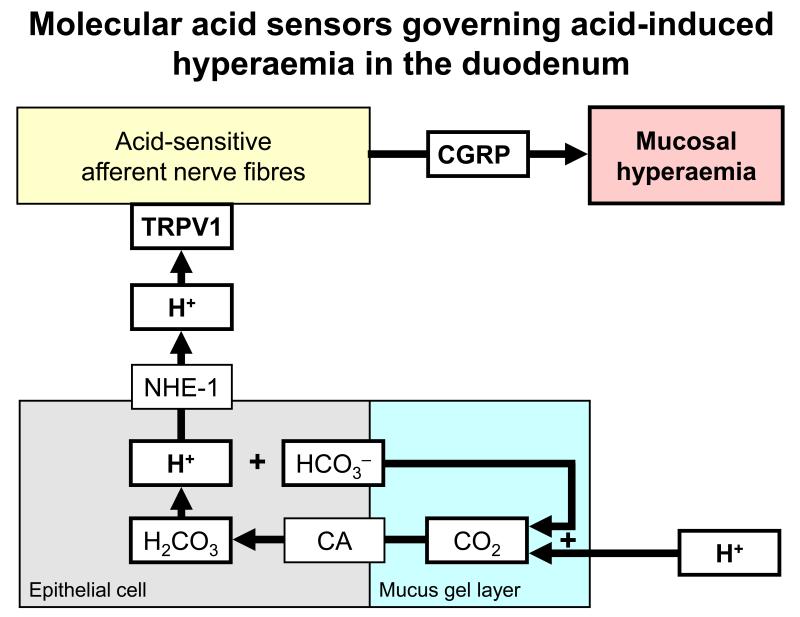Figure 3.
Molecular acid sensors governing acid-induced hyperaemia in the duodenum [24]. The graph shows that luminal acid diffusing into the mucus gel layer of the duodenal mucosa interacts with HCO3− to form CO2. This molecule easily traverses the apical plasma membrane of epithelial cells where it is hydrated to carbonic acid by carbonic anhydrase (CA). Carbonic acid dissociates into HCO3− and H+ which exits the cells via the basolateral sodium-proton exchanger-1 (NHE-1) and lowers interstitial pH. Subepithelial acidosis activates TRPV1-bearing sensory nerve fibres that release the vasodilator peptide CGRP.

